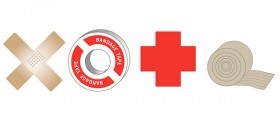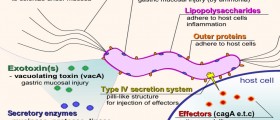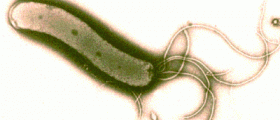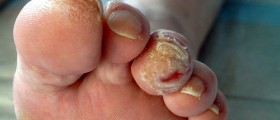
Chronic leg ulcer is an open wound that typically develops on the lower leg or foot. This wound cannot heal without treatment and requires six weeks or longer to be cured. Chronic leg ulcer is often accompanied with pain, itching and swelling. Leg Ulcer Types
There are many types of leg ulcers. A venous leg ulcer is the most common form of the condition and occurs in 80% to 85% of all cases of leg ulcers. Venous leg ulcer is caused by venous hypertension which is a chronic high blood pressure in the leg veins.
There are also arterial leg ulcers that result from poor blood flow through the arteries which are associated with atherosclerosis, and diabetic leg ulcers caused by elevated blood sugar level associated with diabetes.
Vasculitis leg ulcers are the type of leg ulcers that develop due to rheumatoid arthritis, systemic lupus erythematosus, scleroderma and other chronic inflammatory diseases. Traumatic leg ulcers occur due to an injury to the leg whilst malignant leg ulcers are rare type of the condition that results from a tumor of the skin of the leg. Risk Factors for Venous Leg Ulcer
Venous leg ulcer is not common condition and affects 1 to 2 individuals in every 1000 of the general population. On the other hand, prevalence of venous leg ulcers increases with age. About 1 in every 50 individuals aged over 80 years are affected by venous leg ulcers. There are two major risk factors for venous leg ulcers, obesity and physical inactivity. Varicose veins, smoking and family history of venous leg ulcers also predispose a person to the condition. Women are more susceptible to venous leg ulcers then men.Symptoms of Venous Leg Ulcers
The primary sign of a venous skin ulcer is a large and shallow wound that develops in the lower extremity, usually above the ankle. The skin in the affected area is typically dark red, brown or purple as well as thick, dry and itchy. The ulcers are generally painless unless an infection occurs. In that case, the ulcer may ooze foul smelling pus.
Treatment for Venous Leg Ulcers
About 70% of small leg ulcers resolve within 12 weeks when appropriate treatment is provided. Larger ulcers require longer period of time to heal. Treatment for venous leg ulcers includes cleaning and dressing of the ulcer. Compression bandages are placed over the bandages which help to regulate the blood pressure within the leg veins. Patients are advised to lift their legs above the level of the heart as often as possible and to be active for the rest of the time. In case the infection occurs, a leg ulcer is treated with antibiotics.

















Your thoughts on this
Loading...